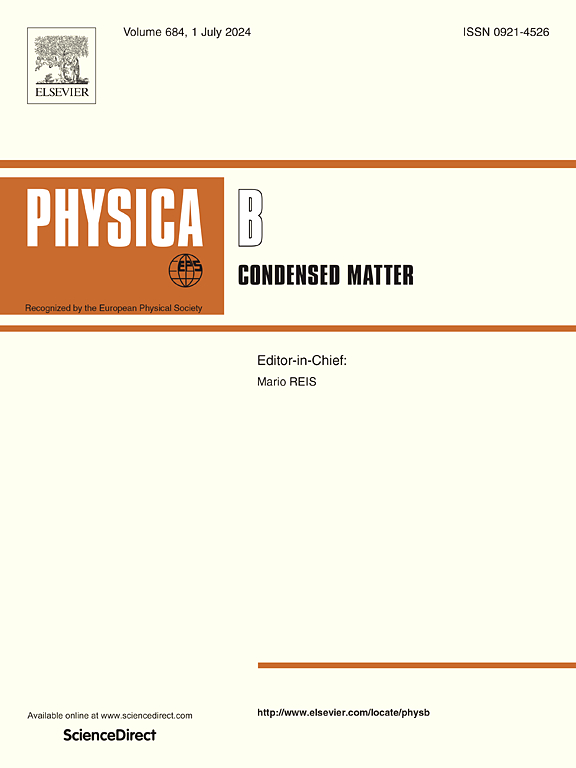电池型硫化镍纳米结构在泡沫镍复合超级电容器上的易控沉积
IF 2.8
3区 物理与天体物理
Q2 PHYSICS, CONDENSED MATTER
引用次数: 0
摘要
结合法拉第电极和非法拉第电极的混合超级电容器在电化学性能上有了显著的提高。增强混合超级电容器的能量存储需要直接在电极表面开发无粘结剂的分层纳米结构,使用可扩展和经济高效的制造方法。本研究通过优化连续离子层吸附和反应(SILAR)循环次数,开发了一种在室温下将高电活性硫化镍(NiS)纳米结构均匀沉积在泡沫镍上的简单技术。在6M KOH水溶液中,当电流密度为2 mA cm - 2时,经过30次循环(N-30s)沉积的NiS电极的最大面积容量为2.08C cm - 2。此外,以n -30和商用活性炭(CAC@Ni泡沫)分别作为正极和负极组装了混合超级电容器(H-SC),其在2 mA cm−2下的比电容为47 F g−1。此外,H-SC的比能为14.58 Whkg−1,比功率为0.214 kWkg−1,在10000次充放电循环后保持率高达92%。这些结果证明了利用直接沉积NiS@Ni纳米结构作为储能装置可行的正极材料的途径。本文章由计算机程序翻译,如有差异,请以英文原文为准。
Facile and controlled deposition of battery-type nickel sulfide nanostructure on Ni foam for a hybrid supercapacitor
Hybrid supercapacitors combining faradaic and non-faradaic electrodes offer a significant improvement in electrochemical performance. Enhancing the energy storage in hybrid supercapacitors requires the development of binder-free hierarchical nanostructures directly on electrode surfaces, using scalable and cost-effective fabrication methods. The present work develops a straightforward technique to deposit highly electroactive nickel sulfide (NiS) nanostructures uniformly on the nickel foam via the Successive Ionic Layer Adsorption and Reaction (SILAR) method at room temperature by optimizing the number of SILAR cycles. From the fabricated NiS electrodes, the electrode deposited for 30 cycles (N-30s) displayed a maximum areal capacity of 2.08C cm−2 at the 2 mA cm−2 current density in a 6M KOH aqueous electrolyte. Additionally, a hybrid-supercapacitor (H-SC) was assembled using N-30s and commercial activated carbon (CAC@Ni foam) as the positive electrode and the negative electrode respectively, which demonstrated a considerable specific capacitance of 47 F g−1 at 2 mA cm−2. Moreover, the H-SC displayed a specific energy of 14.58 Whkg−1 for 0.214 kWkg−1 specific power with an exceptional retention (92 %) after 10000 charge/discharge cycles. These results demonstrated a route to utilize the directly deposited NiS@Ni nanostructure as a feasible positive electrode material for energy storage devices.
求助全文
通过发布文献求助,成功后即可免费获取论文全文。
去求助
来源期刊

Physica B-condensed Matter
物理-物理:凝聚态物理
CiteScore
4.90
自引率
7.10%
发文量
703
审稿时长
44 days
期刊介绍:
Physica B: Condensed Matter comprises all condensed matter and material physics that involve theoretical, computational and experimental work.
Papers should contain further developments and a proper discussion on the physics of experimental or theoretical results in one of the following areas:
-Magnetism
-Materials physics
-Nanostructures and nanomaterials
-Optics and optical materials
-Quantum materials
-Semiconductors
-Strongly correlated systems
-Superconductivity
-Surfaces and interfaces
 求助内容:
求助内容: 应助结果提醒方式:
应助结果提醒方式:


